cost
Latest
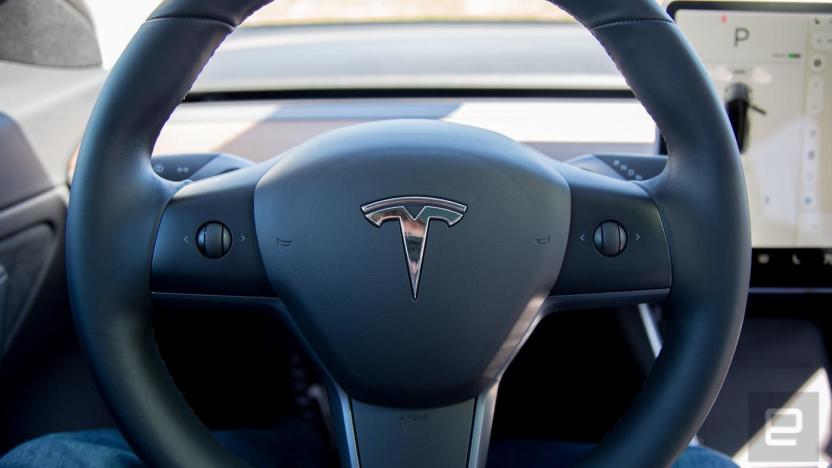
Tesla lowers the price of its 'Full Self-Driving' computer upgrade
After criticism from owners, Tesla has reduced the price of a computer update required for its new "Full Self-Driving" (FSD) feature.

Xfinity Mobile says its new data plans include 5G at no extra cost
Access 5G for no additional charge with Xfinity Mobile.
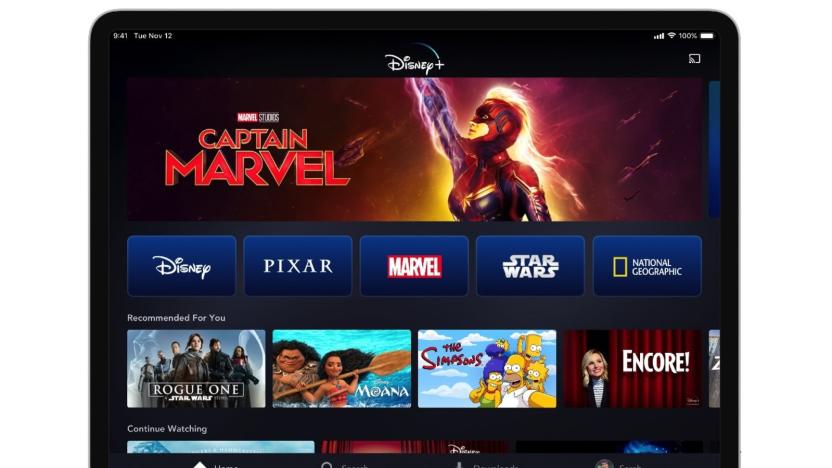
Get Disney+ for $4 per month, if you buy three years upfront
For a limited time, Disney is offering a steep discount on its Disney+ streaming service. When it launches on November 12th, Disney+ is set to cost $6.99 per month, with an option to pay $69.99 for the year. But if users are willing to sign up for the D23 Official Disney Fan Club, Disney has another offer: a three-year commitment for just $140.97. That's $46.99 per year, or $3.92 per month. Demand for the offer was reportedly so high that it temporarily crashed the D23 website.

Huawei's US ban may cost $30 billion, but it vows to rebound
If you were wondering what the short-term cost of America's war with Huawei was, then your estimates can begin at the $30 billion mark. That's the figure Huawei chief Ren Zhengfei mentioned earlier today when discussing the hit his company will take in the next two years. Since Huawei is being hounded out of both the network and smartphone businesses, you can expect that figure to keep going up.
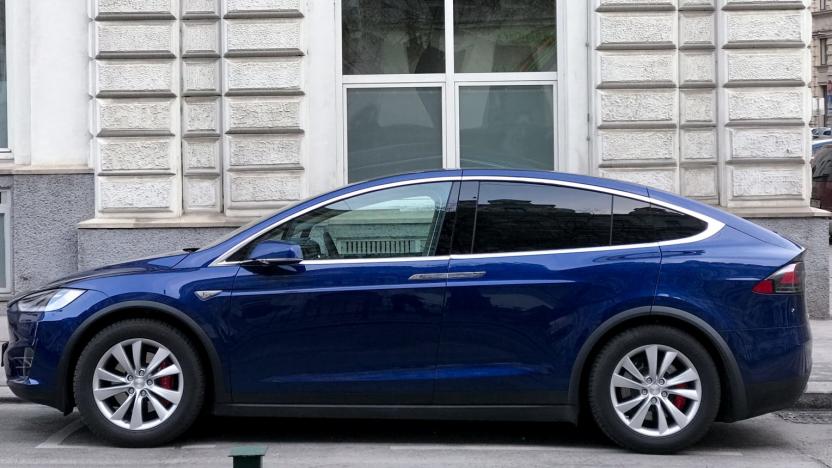
Tesla trumps Audi and Jaguar EVs in independent efficiency test
Tesla has had no end of production troubles in recent times. Even the roll-out of the Model 3 in Europe was marred by logistical issues. But there's a reason its EVs are still so widely-lauded despite these challenges: they're efficient. And that efficiency in comparison to Tesla's competitors has now been confirmed in a test conducted by German electric car rental company nextmove.
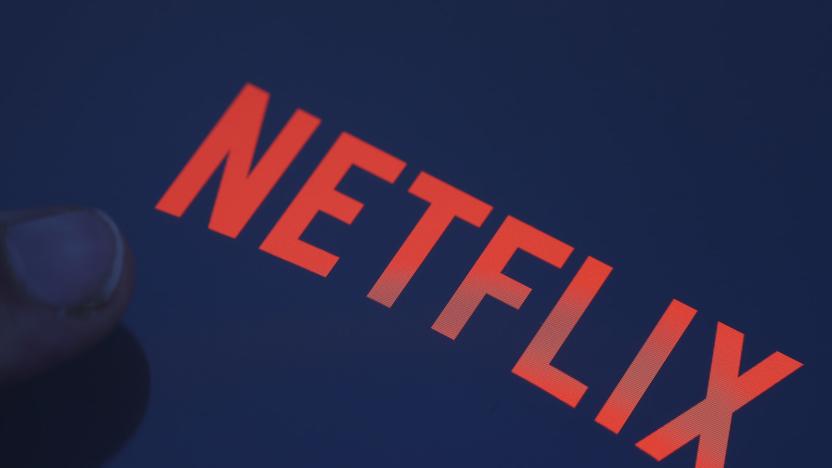
Netflix is raising prices across of all of its tiers
Netflix is raising prices across all of its streaming plans between 13 to 18 percent, marking its largest price hike to date. CNBC reports that the lowest $8 tier will now cost $9 while the $11 and $14 plans will increase to $13 and $16, respectively. New subscribers will be subject to the higher prices immediately while current Netflix members will see the new pricing roll out over the next three months, according to CNBC.

Cyber attacks reportedly cost the US as much as $109 billion in 2016
Cyber attacks are increasingly becoming a fact of life. North Korea attacked aerospace and telecom networks last year. Olympics officials confirmed a recent attack that took place during the opening ceremonies. While Russia denied its involvement in the devastating NotPetya attacks, the US has finally joined other countries in blaming Russia for them. Now, a report from the White House Council of Economic Advisers says that malicious cyber activity like this cost the US economy between $57 and $109 billion in 2016.

Renewable energy may be cheaper than fossil fuels by 2020
Electricity from renewable sources will soon be cheaper than power from most fossil fuels, according to the International Renewable Energy Agency (IRENA). In its new report, Renewable Power Generation Costs in 2017, the agency revealed that technology improvements, government take-up and proactive project development has pushed the costs associated with renewable energy to a new low, and that by 2020 renewable power will largely undercut fossil fuel.

EVE Evolved: Clone upgrades and skill loss are gone!
While the player activity stats might suggest otherwise, the past few years have been a real rennaisance for EVE Online. Developers have gone back and iterated on dozens of old game features that were starting to show their age, and some of them have been pretty huge. The war declaration and criminality overhauls in 2012 were fundamental changes to core gameplay that had been stagnant for almost a decade, and the recent industry and warp acceleration changes were equally fundamental shifts. These were all features we had previously been told were essentially off-limits for iteration because they relied on undocumented legacy code from 2003, and none of the programmers wanted to poke that sleeping beast. Now it seems that no idea is off-limits, and developers aren't afraid to challenge fundamental parts of EVE's original design that may not make sense today. This week's Phoebe update revisited capital ship force projection for the first time since the ships were added in 2004, for example, and it removed the 24-hour skill queue limit that CCP insisted on adding in Apocrypha. In Thursday's episode of The EVE Online Show, developers announced the next big legacy feature to be put on the chopping block in the game of progress: As part of December's Rhea release, clone upgrades and skill point loss on death will be completely removed from the game. In this edition of EVE Evolved, I look at the problems caused by the cloning system, why it needs to be removed, and what could possibly replace it.

EVE Evolved: Has the industry revamp worked?
When I was first introduced to EVE Online back in 2004, a big part of the attraction for me was the promise of a huge player-run economy in which the only real laws were those of supply and demand. With only a handful of tech 1 ships and modules available to build and everything made out of the same basic minerals, science and industry were pretty easy for new players to figure out. Over the years, more complexity has slowly been added to industry via features like Starbases, Salvaging, Capital Ships, Tech 2 Invention, Planetary Interaction and Tech 3 Reverse Engineering. Today's industrialists have to contend with hundreds of different items that are often arranged in sprawling component manufacturing chains, which can make it hard to figure out exactly how to make a profit. The recent industry revamp attempted to solve this problem with a full user interface overhaul and a revamp of material costs and manufacturing prices. All of the relevant information for using a blueprint was packed into a slick new combined Industry UI, allowing new players to find the info they're looking for in-game rather than through websites or opening dozens of item info windows. It's now been almost two months since the industry revamp went live, and while the market for many items is still going to take several months to fully stabilise, the dust has finally begun to settle. So what's the verdict? Has the industry revamp worked? In this edition of EVE Evolved, I consider whether the industry revamp has been successful, how easy it is to make a profit in the new system, and whether it's worth setting up your own industrial starbase.

The math and the money of level 90 boosts
For $60, level 90 boosts definitely seem pricey -- costing more than the expansion itself -- but DisRuptive1 on Reddit has taken the time to break down the math on that $60. To do so, he's taken careful measure of the time it's taken him to get a new character to level 90, plus grinding up professions. And though your leveling speed may be better -- or worse -- than his, if you count up the hours of playtime it takes, you can see how a boosted 90 might be worth the pricetag... at least if you really want another alt. The short of it is that boosting from level 1 to level 90 will save you about 84 hours of playtime, while boosting from 60 to 90 and getting max-level professions will save you about 70 hours of playtime. If we take to the goblin philosophy that time is money, than that many hours certainly add up to a chunk of change -- though we'll leave you to do the math on what your own time is worth. So if you've spent enough time with leveling content that none of it is terribly new to you, then maybe spending $60 instead of spending 70 hours time isn't such a bad idea. For all of the nitty gritty details, head over to read DisRuptive1's full post on Reddit.

How much should an expansion cost?
We've talked about this briefly in a recent Breakfast Topic, but that's not the same as actually standing up and taking a position on an issue, and I (specifically, I, Matthew Rossi, not all of WoW Insider) do have a position on this one - namely, that this expansion will likely contain as much if not more gameplay, art assets, and overall design work as any game coming out, and that frankly the last couple of expansions have been under what they should have cost. I didn't come to this decision in a vacuum, either - I come to it as someone who does not want to pay the price as established. I'm extremely penurious. almost outright parsimonious when it comes to money. I don't like spending it. So when I heard how much the expansion was going to cost (the day the pre-orders became available) I immediately balked at it. It's only ten bucks more to buy Titanfall, I said to myself, and that's a completely new game. And then I read this post by Kim Acuff (who often comments here at WoW Insider as Ember Dione) a developer on Skylanders, and I started to rethink my position on the relative cost of the expansion, how much it should cost, and the validity of the whole "as expensive as a new game" discussion. Because here's the fact - each WoW expansion has effectively been a new game.
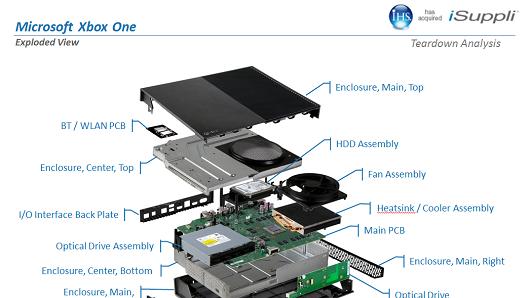
Teardown suggests Xbox One manufacturing cost of $471
The Xbox One costs Microsoft $471 to build, according to a hardware teardown and analysis by research firm IHS. IHS also cracked open the PlayStation 4 to find that Sony spends $381 building its latest home console. The bill of materials for the Xbox One amounts to $457, with the assembly and manufacturing of the system estimated at $14. IHS says that the Xbox One's Kinect camera adds $75 to the total cost of the Xbox One, including assembly, $11 more expensive than the original Kinect's bill of materials and manufacturing costs. Among the other components that factor in to the system's cost for Microsoft is a Blu-Ray drive manufactured by Lite-On that accounts for $32 of the Xbox One's bill of materials, and the system's $25 external power supply unit.

PS4 costs $381 to make, according to hardware teardown
The PlayStation 4 costs $381 for Sony to build, $18 under its retail price of $399. The figure comes from a hardware teardown by research firm IHS that included the bill of materials, which amounts to $372, as well as per-unit cost of assembly in the assessment. The teardown notes that the system's processor and memory account for about half of the cost of the entire console at $188, and that the PS4's 500 GB hard drive is $1 cheaper than the 120 GB one found in the PS3, thanks to the "major decline in HDD costs during the past four years." Sony Computer Entertainment CEO Andrew House said in August that the system "will not generate anything like the losses we did for the PlayStation 3," which amounted to $3.5 billion in 2007 and 2008, after the PS3 launched in November 2006 for $599. IHS' teardown of the PS3 at the time found that the system cost Sony $805, and the company still lost roughly $40 per system as of December 2009. The PS4 is off to a good start, as Sony sold one million units in the console's first day at retail. Sony addressed a few issues with launch systems, estimating that the number of problematic PS4 consoles is less than one percent of those shipped.

Xbox One, PS4 launch prices compared to inflation-adjusted launches of old
The Xbox One and PlayStation 4's $500 and $400 launch price points (respectively) aren't necessarily what we'd call "svelt," but they're also not as expensive as consoles have been in the past. Even ignoring last generation's $600 PlayStation 3 launch, the annals of video game history are riddled with consoles that, when adjusted for inflation, make this holiday season seem like a bargain in comparison. The Intellivision cost $300 when it originally launched in 1979, which doesn't sound all that out of the ordinary – adjust for inflation, however, and that's the equivalent of $849 in 2013 dollars, according to Ars Technica's breakdown of console launch prices and their respective histories. The Panasonic R.E.A.L. 3DO was far and away the most expensive console in history with its $700 launch in 1993, which translates to $1,127 in today's skrilla. Hit up the source link below for more graphs comparing the cost of each console over its lifetime, both as a percentage change and a dollar figure adjusted for modern inflation.

WhatsApp says it has 250 million users
Mobile messaging app WhatsApp has hit a huge total of 250 million users, the company has told the Wall Street Journal. A couple of million users these days is no big deal, considering how big the smartphone audience has become, but 250 million users is significant. In fact, it's on par with Twitter or LinkedIn, and nearly the size of Skype. WhatsApp is one of a series of apps that allow users to send text messages back and forth to any device for free. Essentially, it's a "text-over-IP" type of service. That may not sound all that interesting (and again, there are a number of apps that do this, going all the way back to AOL's own Instant Messenger), but sending messages without paying an individual charge is obviously very appealing to a large audience, and WhatsApp has put a lot of those people together on its network. WhatsApp is also notable for charging a US$0.99 premium cost right up front, without any other in-app purchases or hidden fees. With a simple-to-understand, easy-to-use and one-time-pay messaging service, maybe it's easy to see just why WhatsApp is so popular. [via Mashable]

Heavy Rain cost $52 million but made $130 million, you do the math
Heavy Rain cost developer Quantic Dream $21.8 million to make, and with Sony's marketing budget added in, production costs topped out at $52.2 million (based on a mid-range euro-dollar exchange rate of $1.31), Quantic CEO Guillaume de Fondaumiere tells Eurogamer. It was worth it in the end – Heavy Rain made Sony more than $130.6 million."It's very profitable," Fondaumiere says. Since there seems to be a wide discrepancy between the definition of "successful" in AAA and smaller games, it's always good to know that yes, more than $100 million is still "profitable" to some developers.

EA discusses expected cost increase of PS4 development
The per-game research and development costs associated with developing on the PlayStation 4 will likely be five to 10 percent higher than equivalent development on current generation systems, EA CFO Blake Jorgensen said during an investors conference call earlier this week."On any one title, it might be five to 10 percent increases in cost, but the real opportunity comes with the ability to expand what you can do in that title," Jorgensen said. "Overall you might see larger titles or larger costs because of the capability that you can deal with, but we'll also see larger revenue streams, we believe, because of the excitement around some of those big titles."EA has yet to officially determine whether these increased production costs will translate to increased retail costs, though Jorgensen made such an eventuality sound unlikely: "Typically at the start of a cycle, you've seen the pricing raise say to $69 for a core piece of software, and then over the life of those they've stripped it down to an introduction price typically now around $59. We haven't yet set pricing on our gen four [games], but you'll probably see a similar trend to that during the start of the next cycle."Jorgensen misspoke, according to EA, and actually meant to say that current-gen games start at $59 and are reduced to $49, and that's a trend we're likely to see continue. This aligns with SCEA CEO Jack Tretton's assertion that PS4 games will cost between $0.99 and $60.

Spencer: Halo 4 is Microsoft's most expensive game
Halo 4 is the most expensive game Microsoft has ever made, Microsoft Studios head Phil Spencer tells Polygon. It is "absolutely" the most money Microsoft has ever spent developing a game, he says. "Nothing's even close."Estimates for development costs of Halo 3 average out at $60 million, and that was including a massive marketing budget of about $30 million. Halo 3: ODST ended up bringing in more than $170 million in its first 24 hours on the market. Overall, Halo is a $3 billion franchise, Spencer says.

Humble Music Bundle shows charity disparity among Mac, Linux and Windows users
I bet that behavioral economists get rather excited when they see pay-what-you-want offers going viral. Assuming the seller is collecting some basic demographic detail, the resulting statistics might deliver some interesting insights into the relative altruism (or discretionary cash reserves) of different sorts of folks. The Humble Bundle team (responsible for the Humble Indie gaming bundles that we've covered before) is running a Humble Music bundle, accessible to all sorts of music fans. Featured artists include Jonathan Coulton, They Might Be Giants and MC Frontalot; a flexible portion of the purchase price goes toward not-for-profit cause groups like Child's Play Charity and the Electronic Frontier Foundation. The bundle price is entirely up to the buyer, although suggested pricing goes from $100 down to $15. If you pay more than the rolling average price (currently around $8.28) you get a bonus album of remixes from viral-video darlings OK Go. You can also define the split between the artists and the charities, and contribute a "Humble Tip" for the bundle organizers. Given that buyers can pay what they want, what sort of variance do the Humble Bundlers see among their contributors/customers? It's not scientific, and there could be a whole horde of confounding factors, but take a look at the stats in the image above. Mac users (representing about 1/5 of the 45K total customer count) are paying an average of $9.84 for the bundle, more than $1.50 above the average price and $2.40 above the average Windows user. That might be skewed by a few "whales" who are contributing $100 or more from the Mac side, but even so the population is large enough that the differences would seem to be significant. Before you start forwarding this post to your penny-pinching Windows-using wealthy relatives, note that the Mac users aren't the most likely to empty their wallets for tunes. Linux users, with a slightly smaller share of the overall purchases, are coughing up a stunning $11.94 per transaction -- more than $3.50 higher than the average cost. This might be an artifact of the Humble Bundle's past service to Linux gamers, who may be feeling especially supportive of HB's efforts here, or maybe Linux users feel more strongly about the charities/artists involved. Or they just really are more generous by nature. With the recently finished Humble Indie Bundle 5, Linux users donated an average of $12.51 per transaction. It would be really interesting to do a deeper dive into the HB sales data, especially from the perspective of Dan Ariely or the Freakonomics guys. Most sellers aren't this transparent about their customers, and what they do with the behavioral data they collect -- and there's good PR reasons why they don't share more. In June, travel site Orbitz caught some flak for acknowledging that it showed different search results to Mac users (skewed towards the higher-end properties that they apparently prefer to book) than to PC users. While both sets of searchers would pay the same price for the same room, Mac users responded better to upscale hotels and slightly more expensive stays. The Humble Music Bundle is available until Thursday, August 9.










